10 Things We Learned From WWE Survivor Series 1994
"Don't forget to bring a towel..."
Who's the bigger ageless wonder: Bob Backlund, or Chuck Norris? Both men were in all their glory at the 1994 Survivor Series, standing out over much of the so-called "New Generation" that Vince McMahon had peddled as the alternative to the dinosaurs of yesteryear. And yet, it was limitless ass-kicker Norris (aged 54) and radically-reinvented Backlund (45) that came off as the most interesting performers at the last of the Thanksgiving Eve/Night presentations of Survivor Series.
The 1994 incarnation was one of those shows that, for the most part, just didn't click. Some major storyline developments were in place (the face turn of the monstrous Diesel, the WWE Championship switch to Backlund), but otherwise, you had some goofy booking (particularly in the first two matches). A finish that put the popular Undertaker over strongly essentially rescued what had been a middling, uneven show to that point.
These certainly weren't banner times for WWE. Diesel's forthcoming World title reign would be compromised by a lack of strong challengers, as well as the compulsion to cast him as a smiling Hogan clone instead of a cool and dry-witted brute. There was an air of uncertainty headed into 1995, one that a rather muddled Survivor Series didn't alleviate.
 WWE
WWE
The commentary team for the 1994 Survivor Series was an unusual one - the only pay-per-view in which Vince McMahon and Gorilla Monsoon donned headsets side by side. Both men were more apt to be the play-by-play announcers, but for this show, Monsoon filled the colour commentator's chair. Sadly, for long time WWE fans, it would mark Monsoon's final pay-per-view appearance as a commentator.
Going back to WrestleMania I in 1985, Monsoon would provide commentary for at least one match on 25 different WWE pay-per-views, a decade's worth of events bearing the voice of one of WWE's most recognizable hosts. In 1995, Monsoon would become the on-screen authority figure, taking the spot from longtime President Jack Tunney, who had been absent for most of 1994-95.
 WWE
WWE
It's pretty easy to explain away Monsoon's unusual turn as colour commentator. Generally, two different veteran wrestlers would helm the chair next to McMahon, and if Jerry Lawler was busy with a match, then "Macho Man" Randy Savage would take the seat next to Vinnie Mac. Unfortunately, Savage was no longer with the company, having left the promotion barely two weeks before the pay-per-view.
Savage, tired of being relegated to non-wrestling roles, bolted for WCW the weekend of the 7 November Raw tapings. It was there that McMahon gave a rather dignified farewell aside for Savage that aired on that night's broadcast. Savage was also scheduled to serve as guest referee for the WWE Championship match at the Madison Square Garden show that took place three nights after Survivor Series, but that obviously would never come to pass.
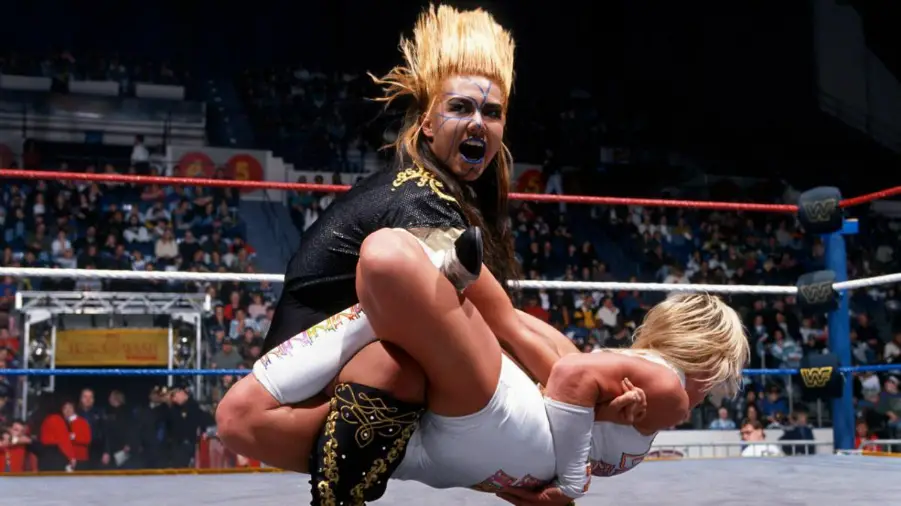 WWE
WWE
There were no women's wrestlers in action at the 1994 Survivor Series, although Women's Champion Alundra Blayze had defended the belt at the preceding WrestleMania and SummerSlam. Blayze would actually lose the belt to rival Bull Nakano at the Tokyo Dome on November 20 (at a non-WWE event), three days before Survivor Series.
The Wrestling Observer reported rumours that WWE was considering adding a Blayze/Nakano match to Survivor Series (using the upcoming Tokyo Dome match to add some storyline zest) in the weeks before the pay-per-view, but those plans would never come to fruition. WWE instead acknowledged the title change during the pay-per-view. The championship would largely be invisible on WWE programming from that point going forward, up until Blayze regained it the night after WrestleMania XI.
 WWE
WWE
The opening match of the 1994 Survivor Series pitted The Bad Guys (Razor Ramon, 123 Kid, Davey Boy Smith, and The New Headshrinkers) against The Teamsters (Diesel, Shawn Michaels, Owen Hart, and Jeff Jarrett). The action in the match was pretty solid for the most part, undercut only by a rather silly finish. There was also a noticeable lack of activity from hometown product Michaels in the match, up until the busy finish.
Michaels had been working through a broken hand, limiting what he was really capable of doing. This was worked into the story of the match, as Michaels generally directed traffic and stayed out of the match, preferring to let his monstrous friend Diesel do all of the heavy lifting. It's a classic case of taking a negative and making a storyline positive out of it.
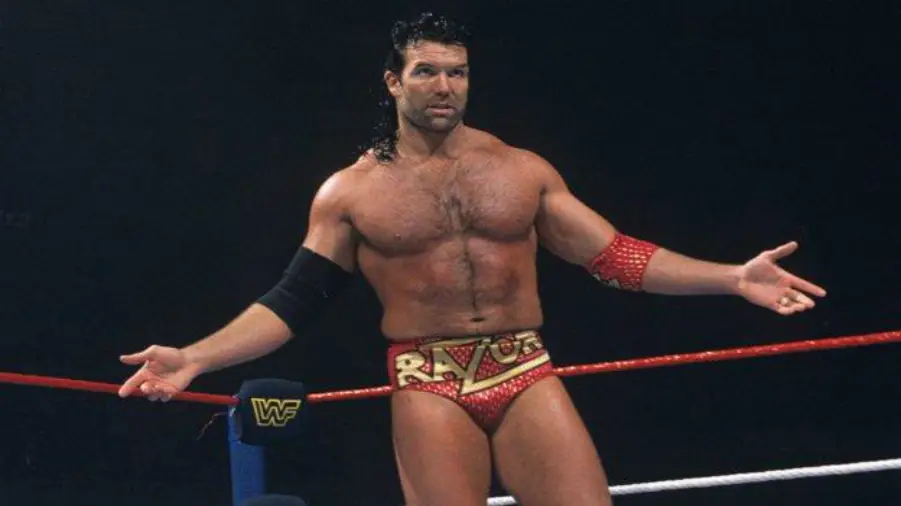 WWE
WWE
Michaels' involvement didn't come until his team had a five-on-one advantage, with Diesel facilitating the eliminations of Ramon's four partners. Then Michaels finally tagged in, actually Superkicked Ramon when Diesel moved, and all hell broke loose. An angry Diesel stalked after Shawn in the aisle, while the other three teammates tried to make peace, to no avail. Rather absurdly, all five men were counted out, giving Ramon the unlikely win.
This made Razor Ramon the only sole survivor in event history to have not pinned or made submit any of his opponents. There have been survivors among a group that didn't score a single fall (Ricky Steamboat in 1987, as just one example), but Razor remains the only lone winner to stand tall with no pins or submissions to their credit.
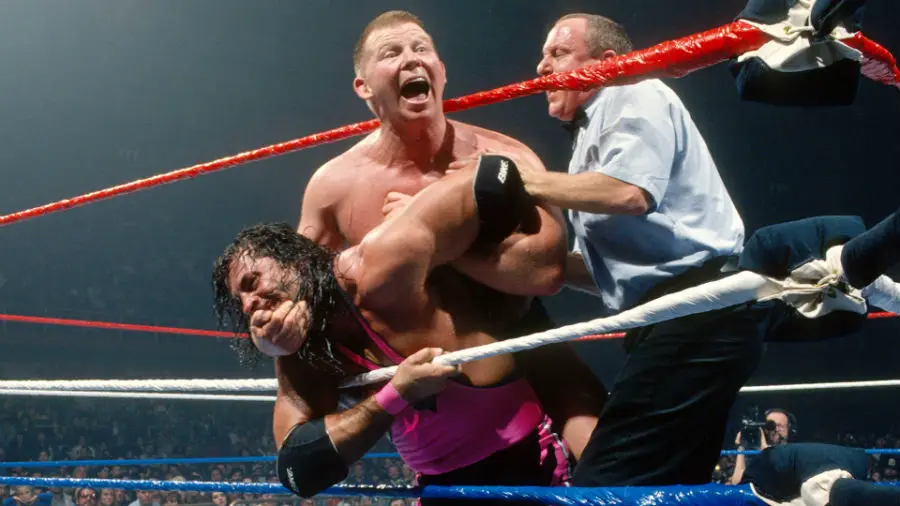 WWE
WWE
Bret Hart won his second WWE Championship at WrestleMania X at the age of 36, and despite being 10 years deep into his WWE career, he seemed like a perfect flagbearer for the company's "New Generation" ad campaign. He was certainly hipper than Backlund, whose push predicated on his cantankerous nutcase persona. Yet, McMahon told Hart sometime before Survivor Series that he wanted to do the title switch.
Hart admits that when McMahon first revealed these plans to him, he argued against the idea, believing that Backlund didn't mesh with the New Generation image. But when Backlund began to get over with his "crazy old man with a confusing vocabulary" shtick, Hart softened on Vince's plan. Hart also reasoned that he wouldn't want a younger wrestler to refuse to put him over down the line, owing to age difference.
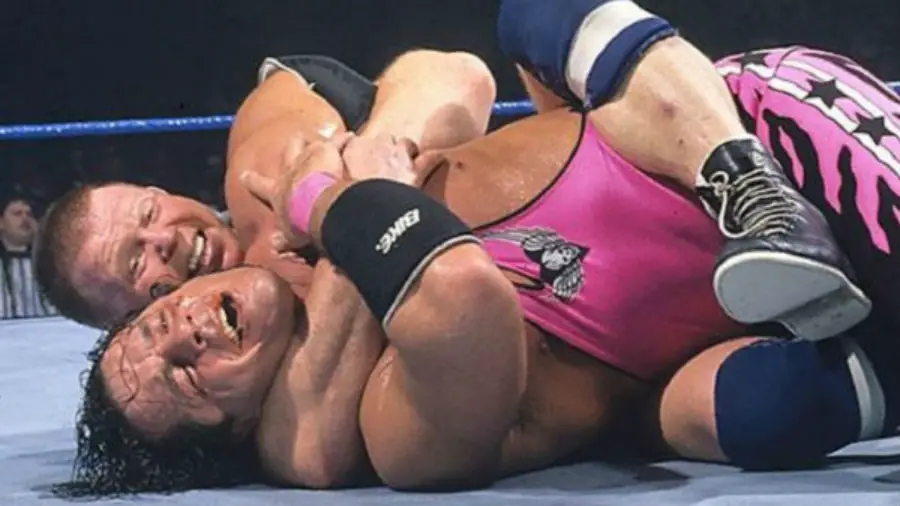 WWE
WWE
Hart's eight-month reign with the WWE Championship would come to an end at the hands of Backlund, in what was billed as a "Towel Match". Each man had a cornerperson (British Bulldog for Bret, Owen for Backlund), and the match could only end when the representative threw in the towel on their charge's behalf. A series of things happened, and Owen (faking empathy for an injured) coaxed his own mother Helen into throwing in the towel to save Bret.
The result of the unique drama was that Bob Backlund set a new record for oldest WWE Champion ever. Backlund was 45 years, three months old when he won the controversial bout, topping the mark set by Sgt. Slaughter at the 1991 Royal Rumble, who was 42 years, five months old when he defeated The Ultimate Warrior. The record would later by broken by Vince McMahon, who had just turned 54 prior to beating Triple H in 1999 on SmackDown.
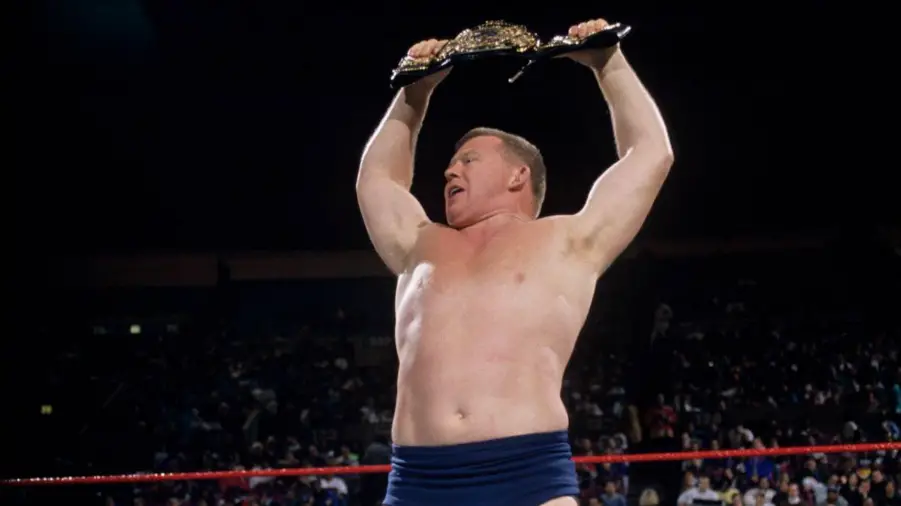 WWE
WWE
Backlund's World title reign is ultimately a footnote in wrestling history, as he only won the belt in order to transition it onto Diesel at the Garden three nights later. The eight-second loss to "Big Daddy Cool" is all most people seem to remember (sadly leaving his crazed post-match interview relegated to the dustbin of wrestling history).
But the victory also afforded Backlund an unusual distinction. He became the first multiple time WWE Champion to have won the belt as both a babyface and a heel. The only other person to that point that had held the belt under each alignment was Randy Savage, who won it twice as a babyface, but turned heel for the final two months of his initial 1988-89 reign. It wouldn't be until Undertaker's WrestleMania 13 victory that somebody would match Backlund's feat.
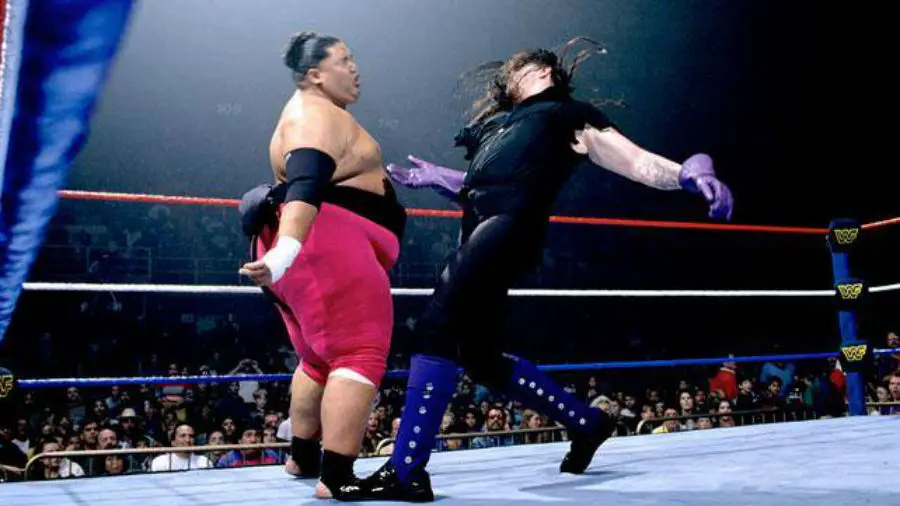 WWE
WWE
At the 1994 Royal Rumble, Yokozuna defeated Undertaker in a casket match that would gain infamy for Undertaker's apparent "death", complete with ghostly soliloquy and levitation into the heavens above. Undertaker went away for seven months to heal some injuries. Come Survivor Series, it would be Yokozuna that would go away for a while following the casket match.
In Yoko's case, although The Wrestling Observer reported that the mammoth ex-World Champion would have minor surgery during his four-month absence, the time off was for Yokozuna to lose weight. When he returned at WrestleMania XI to perform as Owen Hart's mystery partner, the desired effect of his sabbatical wasn't realized, as Yoko had apparently *gained* weight in his time away. Reportedly, Yokozuna intentionally put on pounds in order to give himself a more massive appearance.
 WWE
WWE
Perhaps it was the Chuck Norris effect? The man can bend steel bars with his tongue and slam a revolving door, and he can also resurrect pay-per-view concepts that were once thought to be in deep decay. The 1994 Survivor Series didn't exactly do gangbuster numbers, but it was a strong improvement from the doldrums of 1993.
The event managed to do 254,000 buys on pay-per-view, up 41 per cent from the dismal 180,000 from one year earlier. It even managed to narrowly top the 250,000 from 1992, which shockingly made it one of three PPVs from 1994 to outdo its 1992 equivalent (with Royal Rumble being the lone exception). But it was not a sign of banner times ahead, as four of the five Big Five PPVs in 1995 failed to top Survivor Series 1994's intake.
The 1994 incarnation was one of those shows that, for the most part, just didn't click. Some major storyline developments were in place (the face turn of the monstrous Diesel, the WWE Championship switch to Backlund), but otherwise, you had some goofy booking (particularly in the first two matches). A finish that put the popular Undertaker over strongly essentially rescued what had been a middling, uneven show to that point.
These certainly weren't banner times for WWE. Diesel's forthcoming World title reign would be compromised by a lack of strong challengers, as well as the compulsion to cast him as a smiling Hogan clone instead of a cool and dry-witted brute. There was an air of uncertainty headed into 1995, one that a rather muddled Survivor Series didn't alleviate.
10. End Of An Era
 WWE
WWEThe commentary team for the 1994 Survivor Series was an unusual one - the only pay-per-view in which Vince McMahon and Gorilla Monsoon donned headsets side by side. Both men were more apt to be the play-by-play announcers, but for this show, Monsoon filled the colour commentator's chair. Sadly, for long time WWE fans, it would mark Monsoon's final pay-per-view appearance as a commentator.
Going back to WrestleMania I in 1985, Monsoon would provide commentary for at least one match on 25 different WWE pay-per-views, a decade's worth of events bearing the voice of one of WWE's most recognizable hosts. In 1995, Monsoon would become the on-screen authority figure, taking the spot from longtime President Jack Tunney, who had been absent for most of 1994-95.
9. Missing Madness
 WWE
WWEIt's pretty easy to explain away Monsoon's unusual turn as colour commentator. Generally, two different veteran wrestlers would helm the chair next to McMahon, and if Jerry Lawler was busy with a match, then "Macho Man" Randy Savage would take the seat next to Vinnie Mac. Unfortunately, Savage was no longer with the company, having left the promotion barely two weeks before the pay-per-view.
Savage, tired of being relegated to non-wrestling roles, bolted for WCW the weekend of the 7 November Raw tapings. It was there that McMahon gave a rather dignified farewell aside for Savage that aired on that night's broadcast. Savage was also scheduled to serve as guest referee for the WWE Championship match at the Madison Square Garden show that took place three nights after Survivor Series, but that obviously would never come to pass.
8. One For The Women
 WWE
WWEThere were no women's wrestlers in action at the 1994 Survivor Series, although Women's Champion Alundra Blayze had defended the belt at the preceding WrestleMania and SummerSlam. Blayze would actually lose the belt to rival Bull Nakano at the Tokyo Dome on November 20 (at a non-WWE event), three days before Survivor Series.
The Wrestling Observer reported rumours that WWE was considering adding a Blayze/Nakano match to Survivor Series (using the upcoming Tokyo Dome match to add some storyline zest) in the weeks before the pay-per-view, but those plans would never come to fruition. WWE instead acknowledged the title change during the pay-per-view. The championship would largely be invisible on WWE programming from that point going forward, up until Blayze regained it the night after WrestleMania XI.
7. Hand-Break Kid
 WWE
WWEThe opening match of the 1994 Survivor Series pitted The Bad Guys (Razor Ramon, 123 Kid, Davey Boy Smith, and The New Headshrinkers) against The Teamsters (Diesel, Shawn Michaels, Owen Hart, and Jeff Jarrett). The action in the match was pretty solid for the most part, undercut only by a rather silly finish. There was also a noticeable lack of activity from hometown product Michaels in the match, up until the busy finish.
Michaels had been working through a broken hand, limiting what he was really capable of doing. This was worked into the story of the match, as Michaels generally directed traffic and stayed out of the match, preferring to let his monstrous friend Diesel do all of the heavy lifting. It's a classic case of taking a negative and making a storyline positive out of it.
6. Doesn't Get Much Easier Than That
 WWE
WWEMichaels' involvement didn't come until his team had a five-on-one advantage, with Diesel facilitating the eliminations of Ramon's four partners. Then Michaels finally tagged in, actually Superkicked Ramon when Diesel moved, and all hell broke loose. An angry Diesel stalked after Shawn in the aisle, while the other three teammates tried to make peace, to no avail. Rather absurdly, all five men were counted out, giving Ramon the unlikely win.
This made Razor Ramon the only sole survivor in event history to have not pinned or made submit any of his opponents. There have been survivors among a group that didn't score a single fall (Ricky Steamboat in 1987, as just one example), but Razor remains the only lone winner to stand tall with no pins or submissions to their credit.
5. The Champ Second Guesses
 WWE
WWEBret Hart won his second WWE Championship at WrestleMania X at the age of 36, and despite being 10 years deep into his WWE career, he seemed like a perfect flagbearer for the company's "New Generation" ad campaign. He was certainly hipper than Backlund, whose push predicated on his cantankerous nutcase persona. Yet, McMahon told Hart sometime before Survivor Series that he wanted to do the title switch.
Hart admits that when McMahon first revealed these plans to him, he argued against the idea, believing that Backlund didn't mesh with the New Generation image. But when Backlund began to get over with his "crazy old man with a confusing vocabulary" shtick, Hart softened on Vince's plan. Hart also reasoned that he wouldn't want a younger wrestler to refuse to put him over down the line, owing to age difference.
4. Age Is A Number
 WWE
WWEHart's eight-month reign with the WWE Championship would come to an end at the hands of Backlund, in what was billed as a "Towel Match". Each man had a cornerperson (British Bulldog for Bret, Owen for Backlund), and the match could only end when the representative threw in the towel on their charge's behalf. A series of things happened, and Owen (faking empathy for an injured) coaxed his own mother Helen into throwing in the towel to save Bret.
The result of the unique drama was that Bob Backlund set a new record for oldest WWE Champion ever. Backlund was 45 years, three months old when he won the controversial bout, topping the mark set by Sgt. Slaughter at the 1991 Royal Rumble, who was 42 years, five months old when he defeated The Ultimate Warrior. The record would later by broken by Vince McMahon, who had just turned 54 prior to beating Triple H in 1999 on SmackDown.
3. Duelling Personalities
 WWE
WWEBacklund's World title reign is ultimately a footnote in wrestling history, as he only won the belt in order to transition it onto Diesel at the Garden three nights later. The eight-second loss to "Big Daddy Cool" is all most people seem to remember (sadly leaving his crazed post-match interview relegated to the dustbin of wrestling history).
But the victory also afforded Backlund an unusual distinction. He became the first multiple time WWE Champion to have won the belt as both a babyface and a heel. The only other person to that point that had held the belt under each alignment was Randy Savage, who won it twice as a babyface, but turned heel for the final two months of his initial 1988-89 reign. It wouldn't be until Undertaker's WrestleMania 13 victory that somebody would match Backlund's feat.
2. Role Reversal
 WWE
WWEAt the 1994 Royal Rumble, Yokozuna defeated Undertaker in a casket match that would gain infamy for Undertaker's apparent "death", complete with ghostly soliloquy and levitation into the heavens above. Undertaker went away for seven months to heal some injuries. Come Survivor Series, it would be Yokozuna that would go away for a while following the casket match.
In Yoko's case, although The Wrestling Observer reported that the mammoth ex-World Champion would have minor surgery during his four-month absence, the time off was for Yokozuna to lose weight. When he returned at WrestleMania XI to perform as Owen Hart's mystery partner, the desired effect of his sabbatical wasn't realized, as Yoko had apparently *gained* weight in his time away. Reportedly, Yokozuna intentionally put on pounds in order to give himself a more massive appearance.
1. Don't Call It A Comeback?
 WWE
WWEPerhaps it was the Chuck Norris effect? The man can bend steel bars with his tongue and slam a revolving door, and he can also resurrect pay-per-view concepts that were once thought to be in deep decay. The 1994 Survivor Series didn't exactly do gangbuster numbers, but it was a strong improvement from the doldrums of 1993.
The event managed to do 254,000 buys on pay-per-view, up 41 per cent from the dismal 180,000 from one year earlier. It even managed to narrowly top the 250,000 from 1992, which shockingly made it one of three PPVs from 1994 to outdo its 1992 equivalent (with Royal Rumble being the lone exception). But it was not a sign of banner times ahead, as four of the five Big Five PPVs in 1995 failed to top Survivor Series 1994's intake.
